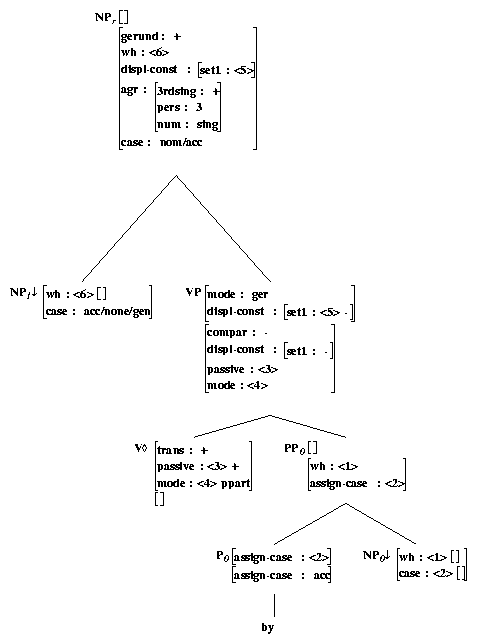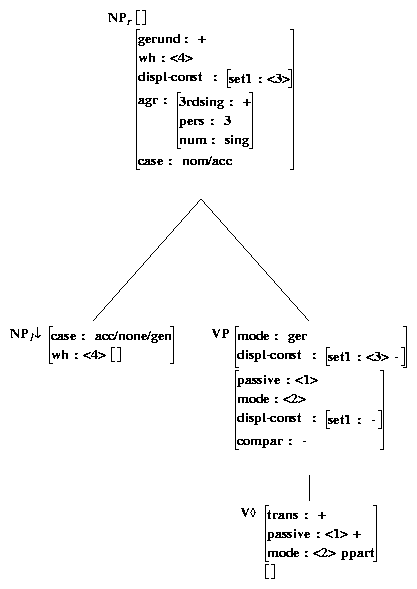

In the English XTAG grammar, gerund passives are treated in an almost exactly similar fashion to sentential passives, and are assigned separate trees within the appropriate tree families. The passives occur in pairs, one with the by phrase, and another without it. There are two feature restrictions imposed on the passive trees: (a) only verbs with <mode> = ppart (i.e., verbs with passive morphology) can be the anchors, and (b) the highest verb in the verb sequence is required to be <mode> = ger. The two restrictions, together, ensure the selection of only those sequences of auxiliary verb(s) that select <mode> = ppart and <passive> = + (such as being or having been but NOT having). The passive trees are assumed to be related to only the NP gerund trees (and not the determiner gerund trees), since passive structures involve movement of some object to the subject position (in a movement analysis). Also, like the sentential passives, gerund passives are found in most tree families that have a direct object in the declarative tree. Figure 18.3 shows the gerund passive trees for the transitive tree family.
 |
 |
| (a) Gnx1Vbynx0 | (b) Gnx1V |